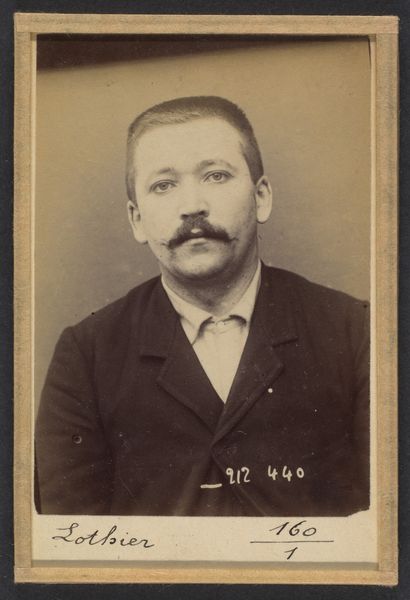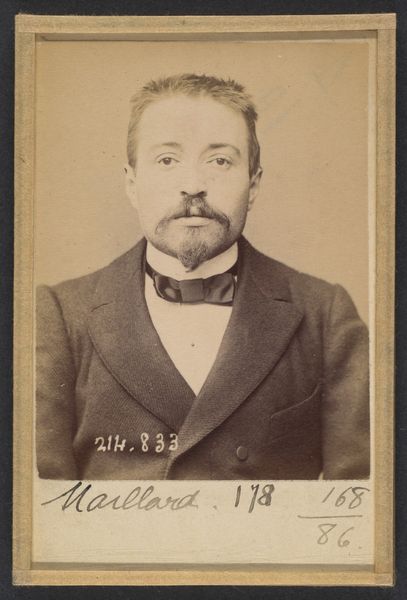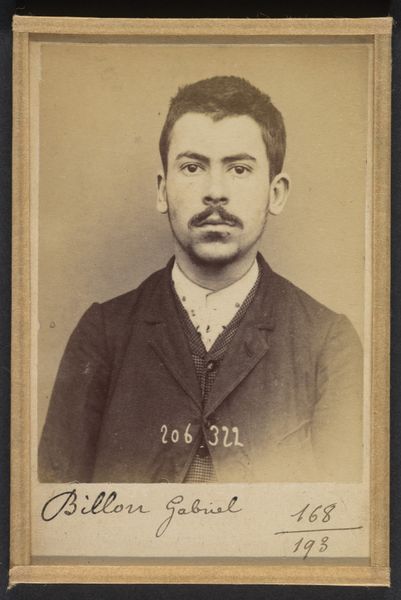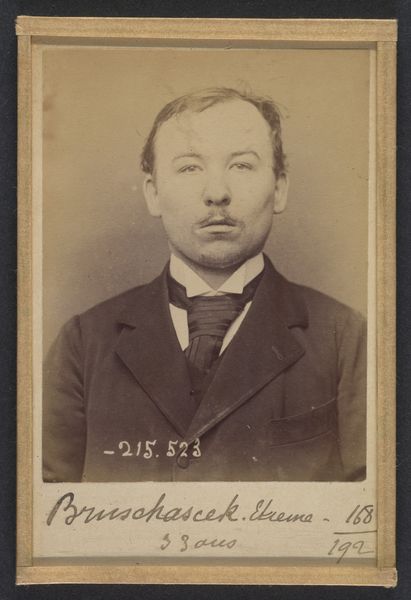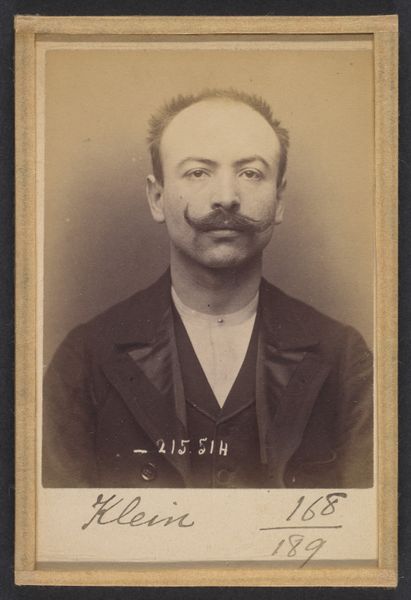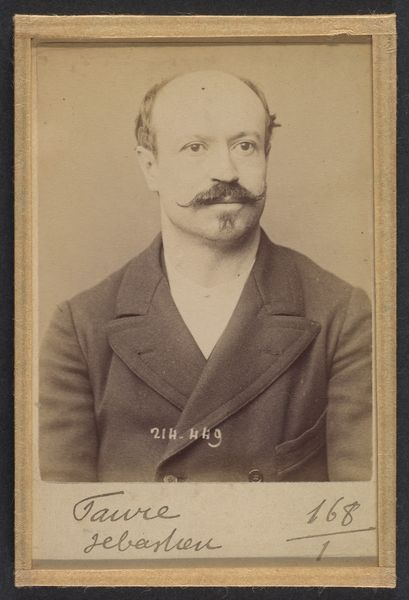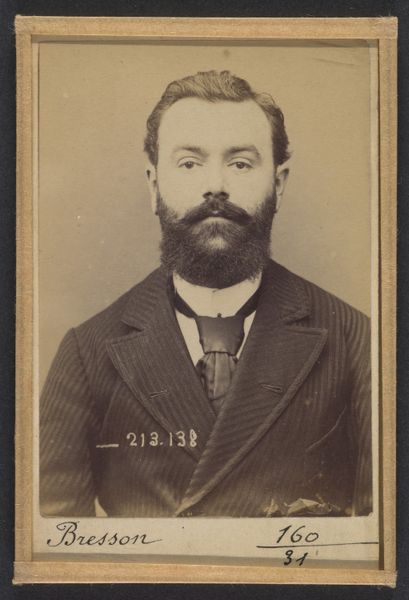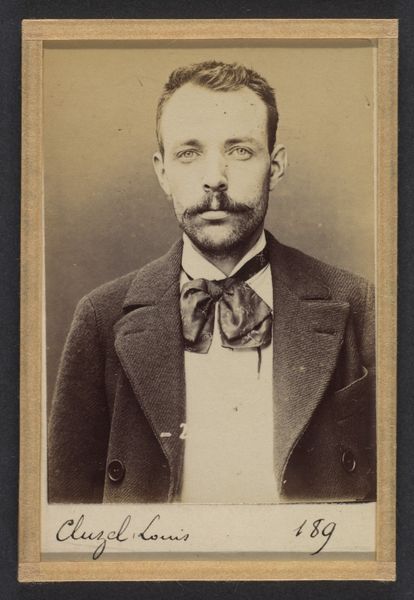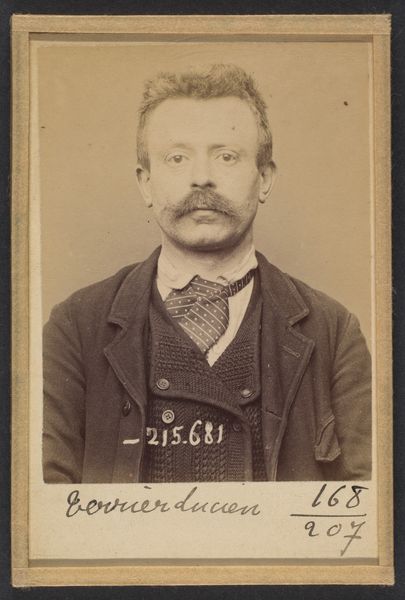
Liégeois (ou Liegois), François. 30 ans, né à Vilette (Meurthe & Moselle). Cordonnier. Anarchiste. 26/3/94. 1894
0:00
0:00
daguerreotype, photography
#
portrait
#
daguerreotype
#
photography
#
realism
#
poster
Dimensions: 10.5 x 7 x 0.5 cm (4 1/8 x 2 3/4 x 3/16 in.) each
Copyright: Public Domain
Editor: Here we have an 1894 daguerreotype by Alphonse Bertillon entitled "Liégeois (ou Liegois), François. 30 ans, né à Vilette (Meurthe & Moselle). Cordonnier. Anarchiste. 26/3/94." It looks like a mugshot, with a neutral expression. The materiality of the print itself feels significant given its age. What can you tell me about this piece? Curator: Absolutely. Bertillon’s work sits at a fascinating intersection of art, technology, and social control. This image isn't just a portrait, it’s a data point within the Bertillon system – a method of identifying and categorizing individuals, primarily for law enforcement. Consider the context of its production: industrializing Europe, anxieties about social order, and the rise of scientific methods applied to policing. Editor: So, it’s more about the system than the subject himself? Curator: Precisely. Think about the labor involved: from the mining of the materials for the photographic plate, to the scientific expertise in developing the image, to the bureaucratic processes it serves. Even Liégeois' profession as a cobbler is relevant – his labor marked as potentially disruptive to the prevailing social order. Editor: That makes me think about the power dynamics inherent in creating the image. The subject, identified as an anarchist, likely had little agency in how he was presented. Curator: Exactly. The image becomes a tool of surveillance and control, its meaning inseparable from the processes and the socio-political forces that brought it into being. Does that give you a different perspective? Editor: It definitely does. It highlights how photography, ostensibly a tool for capturing reality, can also be a means of enforcing certain power structures by emphasizing materials and methods of its production. I had not initially picked up on that connection to materials and means of control.
Comments
No comments
Be the first to comment and join the conversation on the ultimate creative platform.
